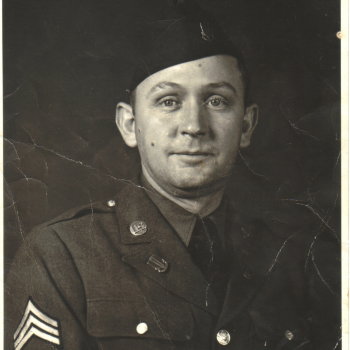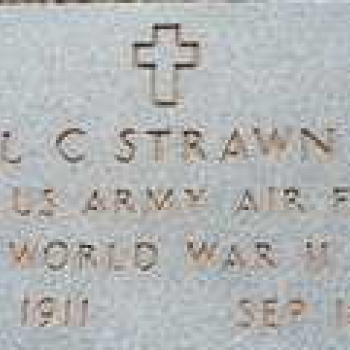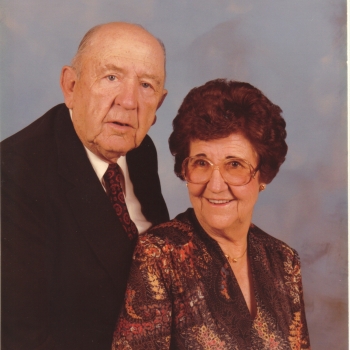Strawn, LC
- Waterman, Texas, Shelby County, United States
Military Information:
- Deceased
- WWII Veteran
- TVHOF Class 2021
- QR Code
- TVHOF Patriot Award
- WWII Victory Medal
- US Army Air Corps or Forces
- SSGT or SSG: Staff Sergeant
- 1-Alpha List
Bio:
L. C. Strawn, was in the US Army Air Forces, which grew rapidly under President Roosevelt’s call for long-range strategic bombing. My father joined the Army Air Forces on February 13, 1942, at age thirty. He was stationed at the Lubbock Army Flying School in Lubbock, renamed Reese Air Force Base in 1949. My father’s assignment was to the instrument flying department, known as the link trainer, his assignment throughout the war.
L. C. Strawn was born and spent his early years on a farm in East Texas, in the area around Timpson in Shelby County. In 1924 his father purchased a new 1924 model Ford and moved the family of six children to West Texas, as his father had purchased land near Littlefield.
L. C. Strawn was in the US Army Air Forces, which grew rapidly under President Roosevelt’s call for long-range strategic bombing. My father joined the Army Air Forces on February 13, 1942, at age thirty. He was stationed at the Lubbock Army Flying School in Lubbock, renamed Reese Air Force Base in 1949. My father’s assignment was to the instrument flying department, known as the link trainer, his assignment throughout the war.
Near the end of World War II, L. C. bought a farm near Tucumcari, New Mexico because he had read an article during the war about land in New Mexico that was cheap with water that came from a ditch. The move to the farm was timed with the first delivery of water. In 1946 he started with an initial eighty acres and enlarged the parcel over the years by adding seventeen acres to it, then later another nearby property of about 80 acres. On the farm he tried raising many different animals. He had dairy cows, chickens, sheep, beef cattle, pigs, and honeybees at various times. He even tried to raise chinchillas and emus. In his last few years he had leafcutter bees and quarter horses.
He often tried the latest crop, along with many other adventures that he thought would make money. His most successful, steady crop over the years was alfalfa. He grew alfalfa for seed, for baling, and then later for cubes. In addition he planted cotton and grew various forage grains and grasses. One year he planted castor beans to produce castor oil.
L. C. Strawn was always interested in serving the community, or perhaps more accurately, expressing his opinions and making a difference. He was passionate about the issues that he felt mattered, such as water rights and education. He said he was elected to every “free” board (or unpaid position) in the county. Mr. Strawn served on boards for the Arch Hurley Water Conservation District, the Tucumcari School Board (1953–1959), and the New Mexico Interstate Stream Commission, based in Santa Fe. Later he was appointed to the National Water Resources Association, attended meetings in seventeen western states, and was made a lifetime member in 1988. While he was a member of the Interstate Stream Commission, L. C. was involved in the building of Ute Dam in Logan, New Mexico.
While his chosen occupation was farmer, sales was a natural talent because he was very gregarious. By far his most successful sales venture was when he sold boat marinas for Meeco Marina, now Meeco Sullivan, of McAlester, Oklahoma. He began selling with Meeco shortly after the completion of Ute Dam in 1963 and continued until he faced mandatory retirement in 1976. He loved the extensive travel, the connections he made with people, the construction, and the finished products. Ute Lake, which he helped become a reality, installed a Meeco marina.
By far L. C. Strawn’s most notable achievements were all related to his passionate interest in water. The building of Ute Dam and Ute Lake, selling marinas for people’s pleasure, and serving on the Interstate Stream Commission and the National Water Resources Association were great accomplishments for him. Although he may not have made all the money he envisioned on the farm, he maintained it throughout his life and left it debt-free when he passed in 2001, still at home on the farm







